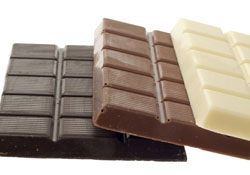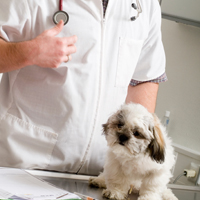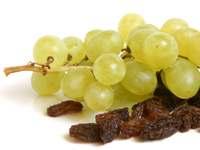The holiday period around Christmas and New Year is obviously a time for most people when much food and drink is consumed, homes are filled with more people than usual, 
Christmas can be a hazardous time of year for pets
Exposure to poisons around Christmas-time may occur for example because:
- The pet scavenges something poisonous
- Loving pet carers blissfully unaware of the dangers offer their beloved animal friends a holiday treat or two
- Children (or inebriated adults!) unable to comprehend the dangers offer their pets something poisonous

Not to put a dampener on festivities but this scenario can spell potential disaster for the family; poisoned cats and especially dogs make up a large proportion of patients seen as emergencies at veterinary clinics during the holiday period.
Chocolate
Dogs and cats are more vulnerable to chocolate poisoning than humans are and cases of chocolate poisoning are more common at certain times of the year such as Christmas and Easter.

Risk of chocolate poisoning is higher if dark chocolate has been consumed
The main harmful substance in chocolate is called theobromine (a methylxanthine like caffeine). Theobromine poisoning is a type of dose-dependent poisoning – this means that whether or not your pet shows signs depends on how much theobromine he/she is exposed to. Not all types of chocolate are created equally as far as the risk of causing poisoning is concerned. The risk depends on the amount of theobromine the particular chocolate contains and is greatest for plain/dark chocolate, cooking chocolate as well as cocoa powder. Milk chocolate is the next most dangerous and finally white chocolate is the least hazardous. So-called chocolates or chocolate drops that are specially made for animals are safe because they are not made from cacao beans and do not contain theobromine.
Your pet is likely to start showing signs within 24 hours of eating the chocolate but it is often much sooner than that and these signs could go on for two to three days. They include vomiting and pain in the stomach area; the abdomen. Poisoned animals may become very excitable, wobbly when walking, and start to pant or breathe quickly. In the most severe cases your pet may start to show twitching and tremoring of the muscles as well as having fits or seizures. Some dogs will seem to want to drink more water and to pass more urine. When you contact your vet it is important to try and give them as much information as possible. So for example, how much chocolate or cake has gone missing and also what type of chocolate it is.

When you contact your vet it is important to give them as much information as possible
There is no specific treatment and patients will receive supportive care based on how severely affected they are. This may include being admitted for a fluid drip into a vein, and for medications such as something to stop them vomiting or a sedative if they are very excitable. Your vet may also have to give your pet something to treat an abnormal heart rhythm. Finally your pet may need to be given some activated charcoal which is intended to mop up any chocolate left in the stomach or intestines.
Many patients with chocolate poisoning make a full recovery as long as they can be supported for long enough. However chocolate poisoning can be very serious and regrettably is fatal in some cases.
Aside from any theobromine present, chocolates can also be harmful – potentially much more seriously – to dogs if they contain xylitol or currants/raisins. In many cases the pet will also have consumed some of the paper in which the chocolate may be wrapped; wrappers are usually of much less concern than the chocolate itself.
Grapes/raisins/currants/sultanas

Dogs should not be fed grapes, raisins, currants or sultanas
The potential for these fruits to cause poisoning in dogs has been known since the late 1990s; at this time it is still unclear whether they can also be harmful to cats. Poisoning in dogs is associated with injury to the kidneys and in the worst cases life-threatening kidney failure can occur. At the moment it is not known exactly how these fruits harm the kidney. What is especially worrying is that there appears to be no way of predicting which dogs may be affected – one dog could eat a whole bunch many times throughout their life without ever having a problem while on the other hand another dog might eat just a few and develop kidney failure. It is because of this unpredictable nature of the poisoning in dogs that we recommend that no dogs are fed any of these fruits and that any dog that does eat any of these fruits, no matter how little the amount, is treated immediately.
All types of grapes/raisins/currants/sultanas may be poisonous to dogs irrespective of whether they are fresh or stored, organic versus inorganic etc. These fruits may be found for example in Christmas cake, Christmas pudding, mince pies and some chocolates.
In terms of signs, vomiting is reported in almost all cases and this usually occurs within 24 hours of ingestion; the fruit may be identified in the vomit. Other signs that may occur include loss of appetite, lethargy, diarrhoea and signs suggestive of pain in the dog’s stomach area or abdomen.
Treatment may include feeding activated charcoal to basically mop up any of the poison still left in your dog’s stomach or intestines. The poison is then passed out of your dog in their faeces. Blood and urine tests may be performed to check for signs of dehydration and kidney failure. In many cases it may be appropriate for your dog to be admitted to receive a fluid drip into a vein for 2 days or possibly longer. The extent of damage to the kidneys will dictate how long your dog needs to be in the hospital, whether he or she needs further treatment and also their chances of making a full recovery. If the kidney failure is not reversible, putting your dog to sleep may be the kindest option.
Xylitol

Baked goods may contain xylitol, which is poisonous to dogs
Xylitol is a naturally-occurring sugar alcohol found in small amounts in a variety of fruits and vegetables. However it is also extracted commercially and used as a sweetener in low carbohydrate and diabetic products. These products include, for example, baked goods such as cakes and biscuits, including some that may be eaten around Christmas time.
Xylitol poisoning has been reported in dogs but so far there are no reports of clinical poisoning in cats. Poisoning occurs when the dog eats a product that contains xylitol. The two main problems that this can cause in dogs are:
- Hypoglycaemia (low blood sugar) – this depends on the amount of xylitol eaten (i.e. it is dose-dependent). Clinical signs of low blood sugar include lethargy, weakness and depression. In severe cases wobbliness and even seizures may occur and this is a life-threatening emergency. These signs may develop within one hour of the dog eating the xylitol, but they can also take longer to come on.
- Liver failure – this may not depend on the amount consumed (i.e. it is non-dose dependent) and even a tiny amount could cause a problem; this is why all dogs should be treated aggressively if exposed to xylitol. Signs associated with liver failure take longer to develop than those from low blood sugar, for example up to 3 days. They include evidence of bleeding say from the gums or in faeces, as well as signs of jaundice where the dog’s gums, skin or whites of the eyes take on a yellow appearance.
You should contact your veterinary practice if you think your dog may have ingested some xylitol regardless of the amount.
Depending on your individual dog, it may or may not be appropriate to induce vomiting. Alternatively your vet may want to wash out your dog’s stomach under a general anaesthetic. Additional treatments that may be required specifically for xylitol poisoning include sugar supplementation and treatment for liver failure. The outlook for dogs that have been poisoned by xylitol really depends on two things. The first is whether they can receive treatment in time and for as long as is required. The second is how severely affected the liver is. Regrettably some dogs develop severe liver failure and putting them to sleep becomes the kindest option.
Dangerous foods
A number of food items can be harmful when eaten by a dog or cat and some that may be found more commonly in the home around Christmas time include:
- Allium species (onions, garlic, leeks, shallots, chives) can be harmful even when cooked causing vomiting/diarrhoea and potentially destruction of red blood cells (haemolytic anaemia). Beware of e.g. sage/onion stuffing, onion gravy.
- Some nuts (e.g. peanuts, macademia nuts) may cause vomiting/diarrhoea but potentially also more severe signs affecting the nervous system or muscles. Beware also of chocolate-coated nuts.
- Mouldy food (e.g. bread or cheese) can be very harmful including causing muscle tremors and potentially seizures.

Other potential hazards

Lilies are very poisonous to cats
Other potential hazards for you to be aware of around Christmas time include:
Plants:
- Lilies may be given as gifts at Christmas time but can be very poisonous to cats (not dogs) causing kidney damage regardless of how much is eaten and including all parts of the plant (flowers, pollen etc.).
- Traditional Christmas plants such as holly, ivy and mistletoe may cause drooling or vomiting but generally not much else in dogs and cats; Poinsettia usually only causes irritation of the stomach/intestines in cats but can be more serious.
- If parts of Christmas trees are eaten the ‘needles’ can cause damage and potentially obstruction of the stomach/intestines.
Consult your veterinary practice if your pet has eaten any of these plants and you are concerned.
All cats that have eaten even a little bit of lily should be seen at your practice and receive treatment
Potential ‘foreign bodies’:
If your pet eats items such as Christmas decorations or wrapping paper this may cause drooling, vomiting or diarrhoea but in the worst case scenario an obstruction may occur in their stomach or intestines – this is especially the case if a cat tries to eat some tinsel for example.
Weather-related hazards:
In countries where Christmas occurs during cold spells, some potential risks include:
- Antifreeze (ethylene glycol): this is poisonous to both dogs and cats causing kidney failure; all suspected cases should be treated.
- Poisoning from human medications that may be used more during cold periods, e.g. paracetamol (acetaminophen), aspirin and other ‘non-steroidal anti-inflammatory drugs’ (e.g. ibuprofen); over-the-counter decongestants (e.g. containing imidazoline compounds).
It is clear that there are many potentially harmful substances that can be a problem to dogs and cats around Christmas time and veterinary practices are consulted about and treat many cases every year. It is very important to be informed, take precautions, keep your pets safe…and of course enjoy yourselves!

Keep your pets safe and have a great Christmas!
 The Veterinary Expert| Pet Health
The veterinary expert provides information about important conditions of dogs and cats such as arthrits, hip dysplasia, cruciate disease, diabetes, epilepsy and fits.
The Veterinary Expert| Pet Health
The veterinary expert provides information about important conditions of dogs and cats such as arthrits, hip dysplasia, cruciate disease, diabetes, epilepsy and fits.
 The Veterinary Expert| Pet Health
The veterinary expert provides information about important conditions of dogs and cats such as arthrits, hip dysplasia, cruciate disease, diabetes, epilepsy and fits.
The Veterinary Expert| Pet Health
The veterinary expert provides information about important conditions of dogs and cats such as arthrits, hip dysplasia, cruciate disease, diabetes, epilepsy and fits.